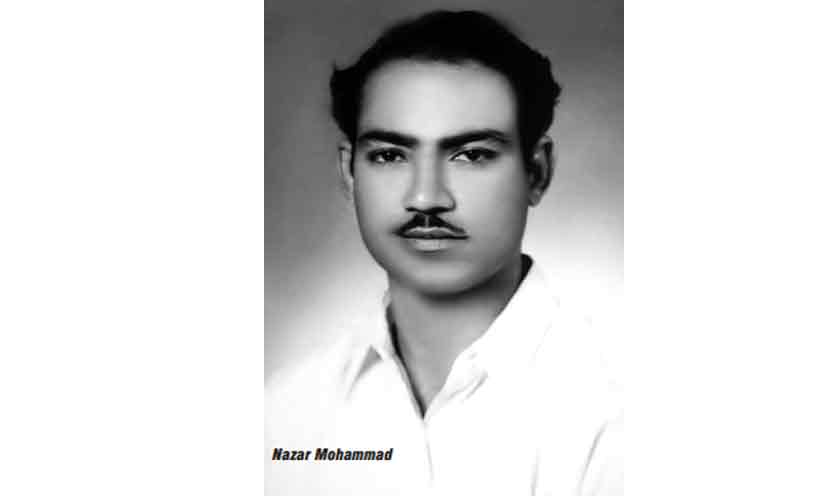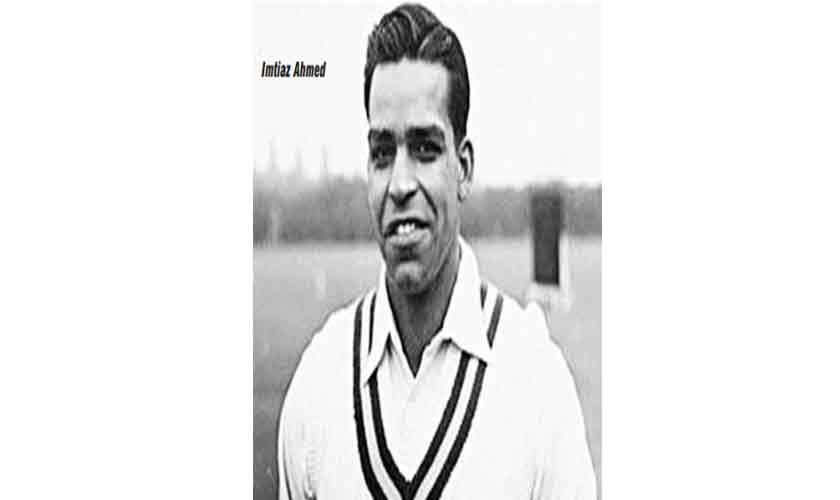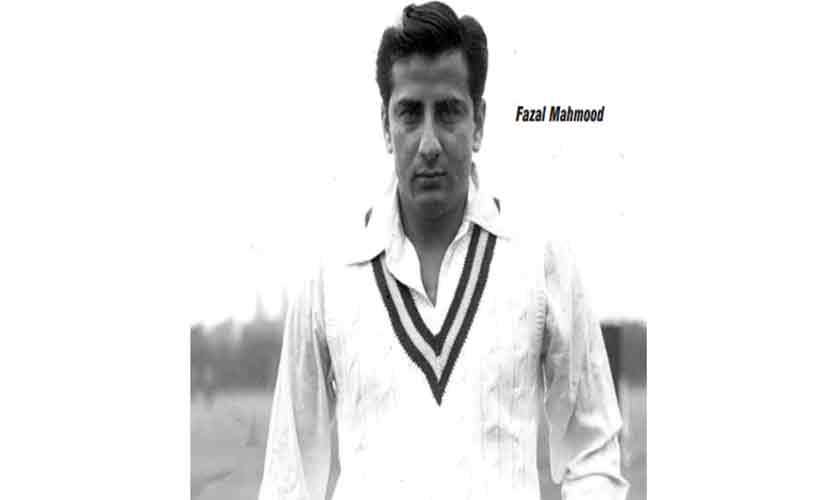[ad_1]
FAfter the creation of Pakistan on 14 August 1947, first-class cricket quickly arrived in December of the same year with a confrontation between Punjab and Sindh at Bagh-e-Jinnah in Lahore. However, it was not until the following winter that Pakistan played its first international match when it hosted a touring West India team for an unofficial one-on-one Test, again at the famous Bagh-e-Jinnah Stadium in Lahore, from 26-29 November 1948. This ‘Test’ marks Pakistan’s debut in international cricket.
The first eleven players to appear in the colors of Pakistan were Captain Mian Muhammad Saeed, Nizar Muhammad, Imtiaz Ahmed, Maqsood Ahmed, Anwar Hussain, Miz Ghazali, Aslam Khokhar, Fazl Mahmood, Shujauddin, Muhammad Amin and Munawar Ali Khan. Lined up against them was a very strong West Indian side who had just beaten India on Indian soil in a high five score Test contest. Led by John Goddard, it included batsmen such as Everton Weekes, who amassed 779 in this series, Clyde Walcott and the legendary George Hedley.
Pakistan won the toss and started their international journey on a high note with an opening partnership of 148 between Nizar Muhammad and Imtiaz Ahmed. After Imtiaz departed with a score of 76, captain Mian Saeed and Nazar took the score to 197 before Pakistan lost their way and collapsed to 241. Pakistan’s first batting collapse in international cricket saw them lose their last 9 wickets in just 44 runs. Nazar top scored with 87. Jerry Gomez took 4 wickets for 51 for the tourists.
The West Indies responded with 308 votes in all. They were 209 for 8 at one stage when the injured George Headley came in to bat at number 10 and amassed his side with a fluent 57 not out in 90 minutes, adorned with 8 boundaries. Pakistan’s most successful bowlers are paceman Munawwar Ali Khan with 4 for 103 and off-spinner Muhammad Amin, who has taken 3 for 47.
Pakistan fared better in their second innings with 285 for 6 declared which featured a 205-run partnership for the second wicket between Imtiaz Ahmed and Mian Muhammad Saeed, with both batsmen making hundreds. Imtiaz became the first Pakistani centurion in international matches. In the remaining 26 West Indies made 98 for the loss of 1 wicket, and the match petered out into a draw.
In April 1949, the Pakistan cricket team embarked on its first overseas international tour, visiting Ceylon (as Sri Lanka was then known) for a series of two unofficial cricket matches. Captained again by Mian Mohamed Saeed, the team won both tests. In the first match, Ceylan compiled just 112 runs in the first innings. The main damage was done by Khan Mohammed with 3 for 36 and left-arm orthodox spinner Usuf Chippa with 3 for 29. Fazal also took 2 wickets for 13 from 12 miserly overs. Pakistan replied with 399 including 93 from Mian Muhammad Saeed and over fifties from Maqsood Ahmed with 85 and Alamuddin, who contributed 67. Pakistanis Khan Muhammad and Fazal Mahmood then ran next through Ceylon’s second innings as the home team were dismissed for a mere 95. He took Khan was 4 for 24 while Fazal’s figures were 4 wickets for just 15 runs in 15 overs in the running runner. Pakistan were deserved winners by an innings and 192 runs.
Ceylan put in a much improved performance in the second informal test. They initially batted a total of 311 with centuries from their captain, talented Oxford blues Frederick D. Saram, and Conroy Gunasekara, who shared a fourth-wicket stand of 181. Khan Mohamed was a leading wicket-taker with 5 for 72, while Fazal managed 3 For 52. Pakistan replied with a massive total of 474 for 9 declared, centered on a 268-run partnership for the second wicket between Nizar Muhammad, who scored 170, and Marwat Hussain, who made 164. Fazal also cracked. With an unbeaten 65. Ceylan only managed 210 in the second batting with Fazal taking 3 for 44 to put up an excellent all-round performance. Needing just 48 runs to win, Pakistan reached their target without any loss for a comprehensive ten-wicket victory.
Later that year, a strong Commonwealth team visited Pakistan and played against the national team in what was described as an unofficial test but could best be described as an international match. Captained by Mian Muhammad Saeed again, Pakistan started steadily with an opening stand of 68 between Nazar and Imtiaz, but ran into trouble once the spinner duo of Cecil Pepper and George Tribe came into the bowl. No other batsman apart from Mian Saeed was able to tackle the combination of Pepper’s right arm spin, googlies’ arm spin, tribesman’s unorthodox left arm spin and chinaman’s delivery. Pakistan could muster only 176. The Commonwealth replied with 419 for 9 wickets, John Holt top-scoring with 162. Pakistan’s second batting tribe was practically unfathomable, taking 5 wickets for 8 runs in 10 overs of which 8 were boys. . Pakistan’s paltry score of 66 led to an innings and 177-run defeat. The crowd was outraged by this dismal performance and demonstrated in front of the Pavilion, raising slogans against the Chosen Ones.
Ceylon made a return visit to Pakistan in March–April 1950 for two unofficial exams. In the first ‘Test’ in Lahore, Pakistan, with Mian Saeed again at the helm, he scored a total of 362 on debut. Imtiaz made a war 127 and there were fifties from Maqsood and the debutant Asghar Ali. Ceylon, captained by Jayawickreme, found Fazal too difficult to tackle, and batted him out, claiming 5 wickets for 56 runs while Ceylon innings folded for 166. Falling on Fadl and 4 twisting Khaled Qureshi’s left hand. Pakistan won comfortably by an innings and 45 runs.
The second unofficial Test was played at the Karachi Gymkhana Stadium. Ceylan again found it difficult to negotiate with Fazal who took 5 for 30 in 25 overs with fuzzy seam and swing and ball control. Although Ceylon restricted Pakistan to just 260 in reply, with Zoysa taking 6 for 72, that proved too much for the Ceylon batsmen. They were all out in the second innings for just 149. The main breakers this time were Yusuf Chiba with 5 wickets and Fazal with 3 others. Pakistan bowled out by 52 runs required to win by less than 8 runs, without losing a wicket, for a deserved 10-wicket win.
The MCC team, led by Nigel Howard, arrived in Pakistan in the winter of 1951 for two unofficial Tests. Abdul Hafeez Kardar was now the captain of Pakistan and among the new faces in his team was a 16-year-old prodigy named Hanif Muhammad who would open the batting and also act as the team’s wicket-keeper. Hanif’s older brother, a minister, was also on the team, as was veteran Amir Elahi, who had emigrated from India. In the opening ‘Test’ at Lahore, the MCC batted first and made 254 not out with Jack Robertson scoring 61. Khan Mohamed had 5 wickets for 84 runs and was ably supported by Amir Elahi whose figures were 4 for 97. Pakistan started with an opening stand of 96 Between Nizar and Hanif they eventually accumulated a total of 428 for 9 wickets declared. Maqsood scored 137 before he was run out, Ghazali scored 86 and Nazar 66. Captain Kardar also made a useful contribution of 48. On quiet batting, the MCC made a second innings of 368 for the loss of just 1 wicket and the match ended in a simple draw. Spooner and Graveney both hit unbeaten centuries while Robertson, the only batsman to be dismissed, scored 70.
The second unofficial test was played in Karachi. The MCC could only manage 123 runs in their first innings with Fazal taking 6 wickets for 40. Pakistan also struggled to reach 130 runs and lead in the first innings with just seven runs. Imtiaz was their top run-scorer with 43, while Statham and Shackleton each took 4 wickets. The MCC batted to a greater surety in batting two to score 291, as Tom Graveney amassed a classy patch of 123, full of elegant strokes including 18 over the fence. Khan Mohamed took 5 wickets for 88. Pakistan’s winning target was 285 and the winning target was 108 for 2 on the penultimate day of the match, and young Hanif was unbeaten on 52. On the final morning they led to 144 before losing by 3 quick wickets, including That Hanif for 64 left them a little uneasy at 178 for 5. Kardar and veteran Anwar Hussain now came together for a decisive 83-run sixth-wicket partnership in which Anwar’s wicket was 48. Fazal stepped in after Anwar and the dismissals helped Pakistan cross the victory line without any Another loss. Kardar remained undefeated with a 50 stroke win.
This victory over MCC proved to be a turning point in the history of cricket in Pakistan. The Imperial Cricket Conference granted them Test playing country status at their next meeting at Lord’s on 28 July 1952.
Thus Pakistan played a total of 8 ODIs before obtaining Test status, 6 on home soil and 2 abroad. Of these, he won 5, lost 1, and drew 2. In the first six matches, the team was captained by Mian Mohamed Saeed, while Abdul Hafeez Kardar took the lead in the Olympics.
The leading scorers for Pakistan during this phase were:
Nizar Muhammad, 536 runs, average of 53.60, 1 century and 3 fifties. The highest score is 170
Imtiaz Ahmed scored 518 runs at an average of 47.09 and two centuries and two fifties. The highest score is 131
Maqsood Ahmed, 452 runs, average of 41.09, century and 3 fifties. The highest score is 137
Mian Mohamed Saeed, 285 runs, average of 47.50, fifty-one century. Highest score 105*
The main wicket-takers of Pakistan during this period were:
Khan Mohamed, 38 wickets, 21.18 average, 3 fives, best bowling 5 for 72
Fazal Mahmud, 36 wickets, average 15.83, Fivers 2, best bowling 6 for 40
Ossoff Chiba 16 wickets average 19.75, fives 1, best bowling 5 for 53.
Imtiaz performed wicket-keeping duties for the first 6 matches and killed 23 victims behind the stumps and made 18 catches and 5 stumpings. In addition, he also took a solitary hunt outside. Hanif took over the glove work in the last two games and had a total of 8 dismissals, 7 throws and 1 step.
Despite suffering from multiple birth handicaps, Pakistan joined the ranks of the elite Test cricket playing nations within five years of gaining independence. The nascent side that developed during these formative years would go on to win many laurels for the country, eventually establishing cricket as the unifying national force it is today.
Dr. Salman Faridi is a great surgeon, poet, sports enthusiast and avid reader with a private collection of over 7,000 books. [email protected]
[ad_2]
Source link



